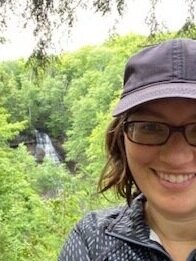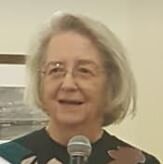ABOUT MILLER GARDEN CLUB
OUR HISTORY
The Miller Garden Club got its start at a meeting called and organized by John Nickerson on March 21, 1998, at the then Wildermuth Branch of the Gary Public Library. Topics on the agenda included discussion on the purpose of the club, the name for the club, the role of the club with the Lake Street Beautification Committee, sources for plants, a plant swap in May, and a garden walk in June.
Subsequently, bylaws were adopted, officers elected, committees formed, and the first events conducted. Club presidents have been: John Nickerson 1998-2001, Craig Kloss 2001-2002, Bob MacAllister 2002-2003, Jack Tonk 2004-2010, Karin Crane 2010-2015, Corya Channing 2015-2018, Elizabeth Wallish 2018-2020, Karin Crane 2020-present.
OUR MISSION
The Club’s mission is to provide gardening education on all levels; to protect native trees, plants and wildlife; and to beautify the Miller Beach community in Gary, Indiana.
OUR GOALS
The Club has continued its original goals through its annual Plant Sale in May; Secret Gardens Walk in July; Beer, Brats and Bulbs in October; holiday decorating at the Miller South Shore Station; continuous beautification of public planters and gardens in the Miller Beach community of Gary, Indiana; placement of three attractive “Welcome to the Miller Beach Community” signs; informational speakers at our general meetings; and outings to garden spots and other places of interest to gardeners.
MEMBERS’ MEETINGS
The Club meets on the third Saturday of the month in March, April, June, and September from 10:00–12:00. Meetings are held at the Marquette Park Aquatorium, 6918 Oak Ave, Gary, IN 46403. Coffee and light refreshments are served. Non-members are welcome to join us! Volunteers come an hour early to help spruce up the Aquatorium courtyards. Click here to view minutes of the members’ meetings.
BOARD OF DIRECTORS
Jenifer Vargo Okamura
Jennie Rudderham
Carol Smith
Dawn Vanzo
Judy Ayers
Karin Crane
Kathy Grimler
Bruce Harlow
pRESIDENT
KARIN CRANE
SECRETARY/TREASURER
BRUCE HARLOW
Grew up in Bountiful, Utah, just north of SLC
After 32 yrs in Chicago, moved to Miller in 2010
Retired from Homecare/Hospice Clinical Informatics
Avid genealogist; adequate knitter; mediocre gardener
MD Loma Linda University; MBA Northwestern
VICE PRESIDENT
JUDY AYERS
An Open Letter from the President
The Club’s mission is to provide gardening education on all levels; to protect native trees, plants and wildlife; and to beautify the Miller Beach community in Gary, Indiana. Toward reaching and perhaps surpassing these goals, we are constantly working on gardening projects all over the Miller Beach and greater Miller community. The following will help outline our current duties, our challenges, and our plans and goals for the foreseeable future:
We are responsible for 18 gardens, including the Woodson Library on Lake St., the Old Town Hall at Miller Ave and Grand Boulevard, the Fire Station on Grand Blvd., the Cell Tower at Montgomery and Locust, Marquette Park welcome sign, Father Marquette statue garden, the Aquatorium, the Farmer's Market, several rain gardens including our latest NIPSCO-funded project, and many smaller gardens in the area. Note: the gardens at the Pavilion are not under our purview. The gardens fall into 2 categories: Gardens with exclusively Native plants and then more traditional gardens.
All gardens within Marquette Park are required, by mandate from the 2012 restoration, to be native. Outside of Marquette Park we have more latitude in our plant choices. The Native gardens serve several purposes, the most important of which is providing food and shelter for creatures native to our region. While looking good is a nice bonus, providing forage and places for wildlife to overwinter is the priority. That is why, when plants are done for the season, we leave them intact and do not deadhead or cut back. It is perhaps agreed amongst gardeners that many native gardens tend to look a bit weedy as the fall progresses, but the plants are just doing their primary job. We do strive to keep them looking as tidy as possible.
As for the more traditional gardens, 95% of the plants in those gardens are either donated or are leftovers from our plant and bulb sales. We very rarely go out and purchase plants. We do the ultimate recycling and make do with what we are given. A perfect example is our library garden. The 150+ heirloom roses were donated to us several years ago. We have worked long and hard to make it a unique and beautiful garden, and it is finally starting to come into its own. Another good example is the cell tower garden on which we have spent $0 in plant purchases. The fire station garden was also all free plants. Our volunteers have done an admirable job of making the wide assortment of plants we are given work cohesively.
All our traditional gardens have daylilies. We received a donation of about 500 daylilies many years ago which we spread across the gardens. The problem is they are a “one-trick-pony,” meaning that after their relatively short bloom time they become a bunch of dying leaves. But as part of an assortment of garden plants, daylily blooms do fill a nice spot in July. We also plant quite a bit of butterfly weed since it is a native and we all love the orange flowers. But it is very hard to transplant and get established. And even if we could, 18 gardens of nothing but orange flowers would be monotonous. We also plant flowering shrubs as the backbone of many of our gardens. The Old Town Hall is a perfect example. It has Serviceberry, crabapple, Beautyberry, Redbuds, Lilacs, Spirea and even the oft-derided Rose of Sharon (which Hummingbirds adore). All shrubs were donated.
Mulching is very time consuming. But the reason we mulch is not for appearances. Mulch is instrumental in keeping moisture in the soil, and this is important because almost all our gardens have no water source. When you are relying only on rainwater, mulch is a necessity. Even with Natives. Also, we almost always paper under the mulch and that cuts back dramatically on weeds, which saves tons of volunteer time.
Sometimes gardens fall into disrepair due to situations that are out of our control. We were informed when the new plan for the South Shore railroad was announced that the station garden would be demolished in Spring of 2021; so, we spent hours and hours moving plants. And now it sits undone and unattended; not sure when it will be leveled, but at least we saved the plants. We are stretched too thin. We are constantly receiving requests for help with gardens, and it is sometimes hard to say no. A perfect example is the Humane Society. Due to all the 12/20 construction, their garden was wiped out. They have requested assistance in starting a new one. It's impossible to say no to people who spend their time saving puppies and kittens. And so, 2022 already has a big project in store. We would love help.
Finally, while a lot of our time is spent working on community gardens, an equal amount of time is spent on our fundraising events. The money raised is put back into the community both through our gardens, and with special long-term permanent projects. We are the organization that bought and installed the green "Welcome to Miller" signs. The 3 signs (1 was wrecked by a drunk driver) cost over $9,000. Along with the Miller Community Fund, we have also bought 8 memorial benches for Marquette Park. They cost upwards of $1500 each. We installed 6 garbage cans in Marquette Park parking lots. (Cost $1200+ each) And we've added to the collection of boulders in the park along the driveways. We try to put our money towards permanent installations whenever we can. Our next project is a rebuild of the Shelby Street triangle garden if the city will cooperate.
Sometimes our work looks very chaotic, but there is generally, not always, a method to our madness. We have built this organization on a bunch of rag-tag volunteers; yet we have accomplished much in our twenty plus years.


![20181020_191939[1].jpg](https://images.squarespace-cdn.com/content/v1/5d77bd285ce64404998b1bdd/1572201120012-Q3UZH20KDEQIA0AJ4RNL/20181020_191939%5B1%5D.jpg)










